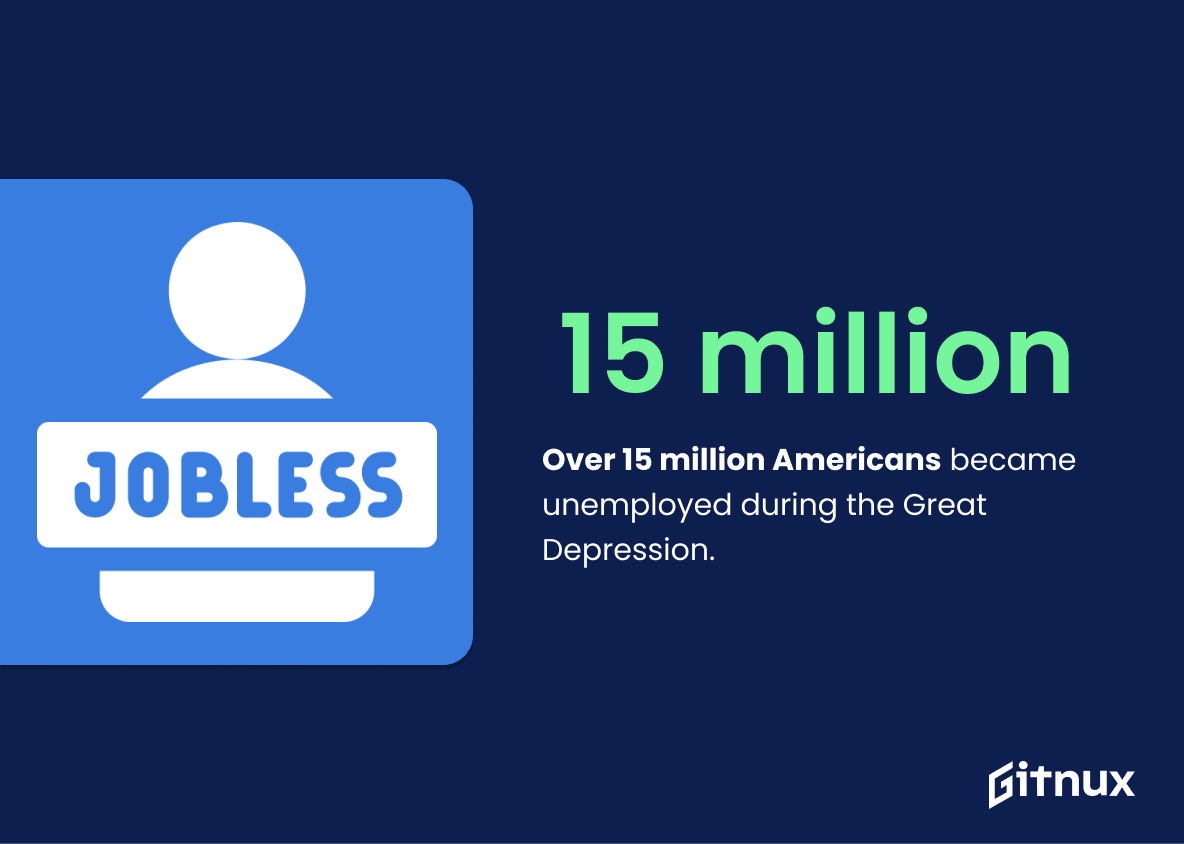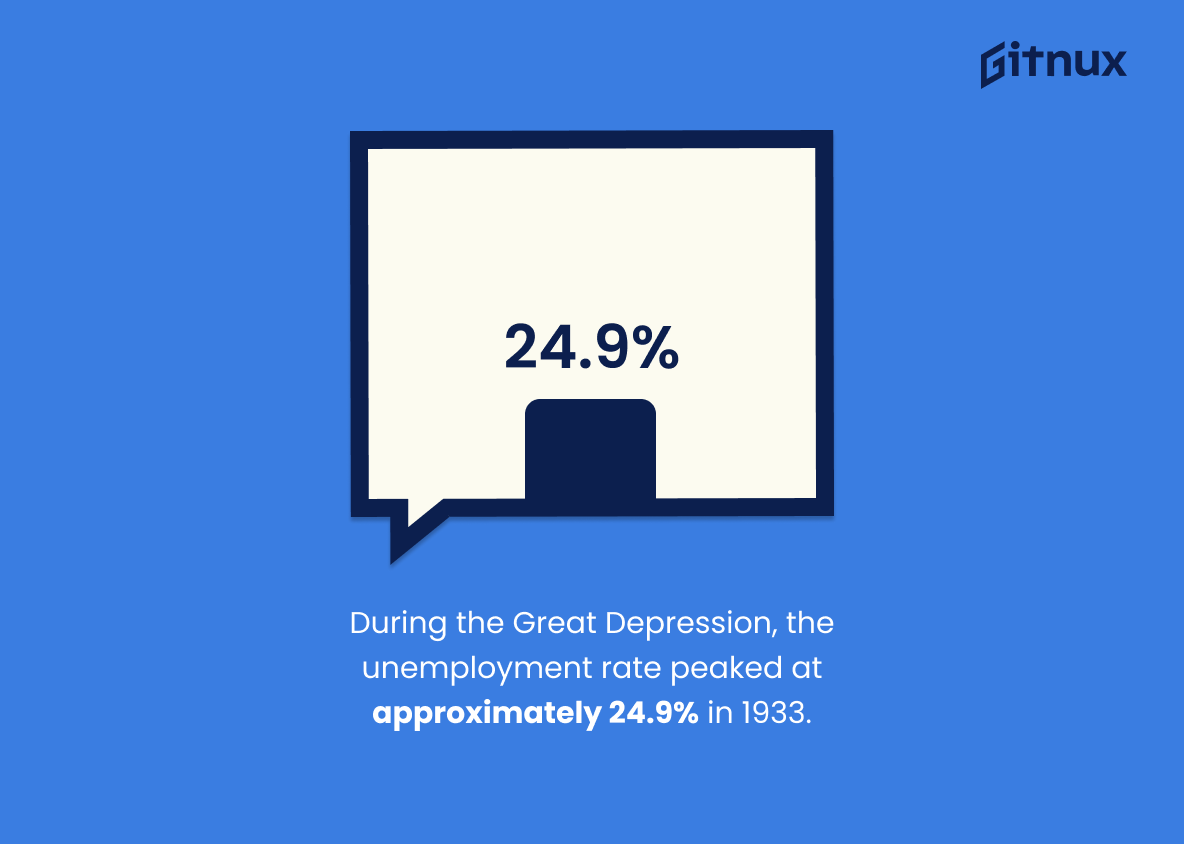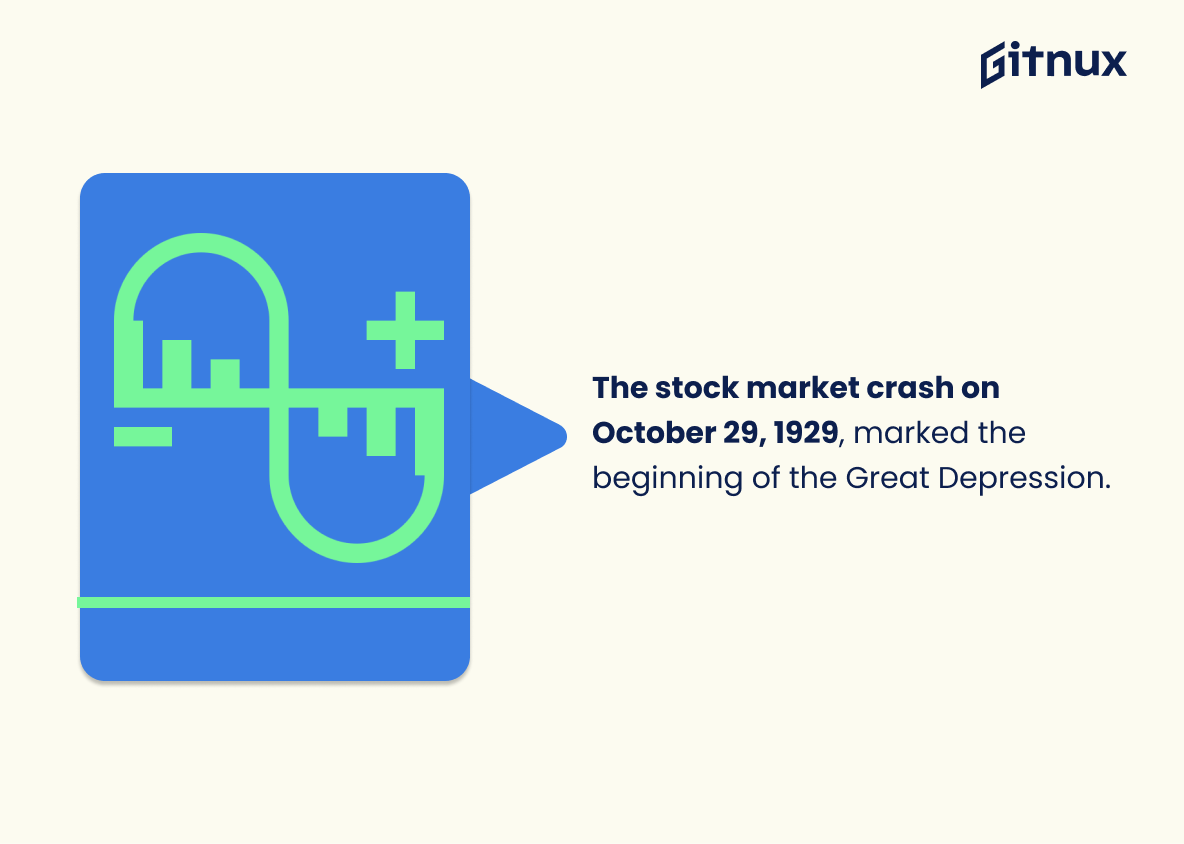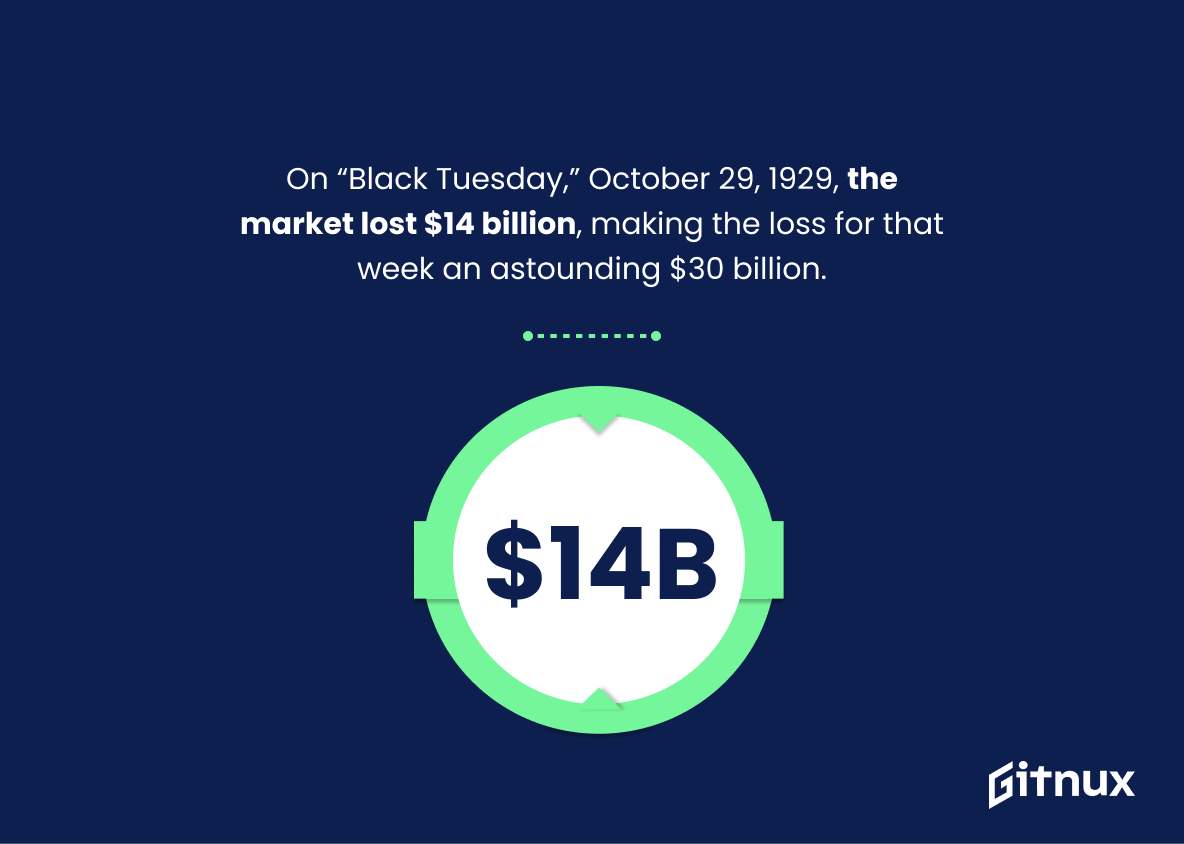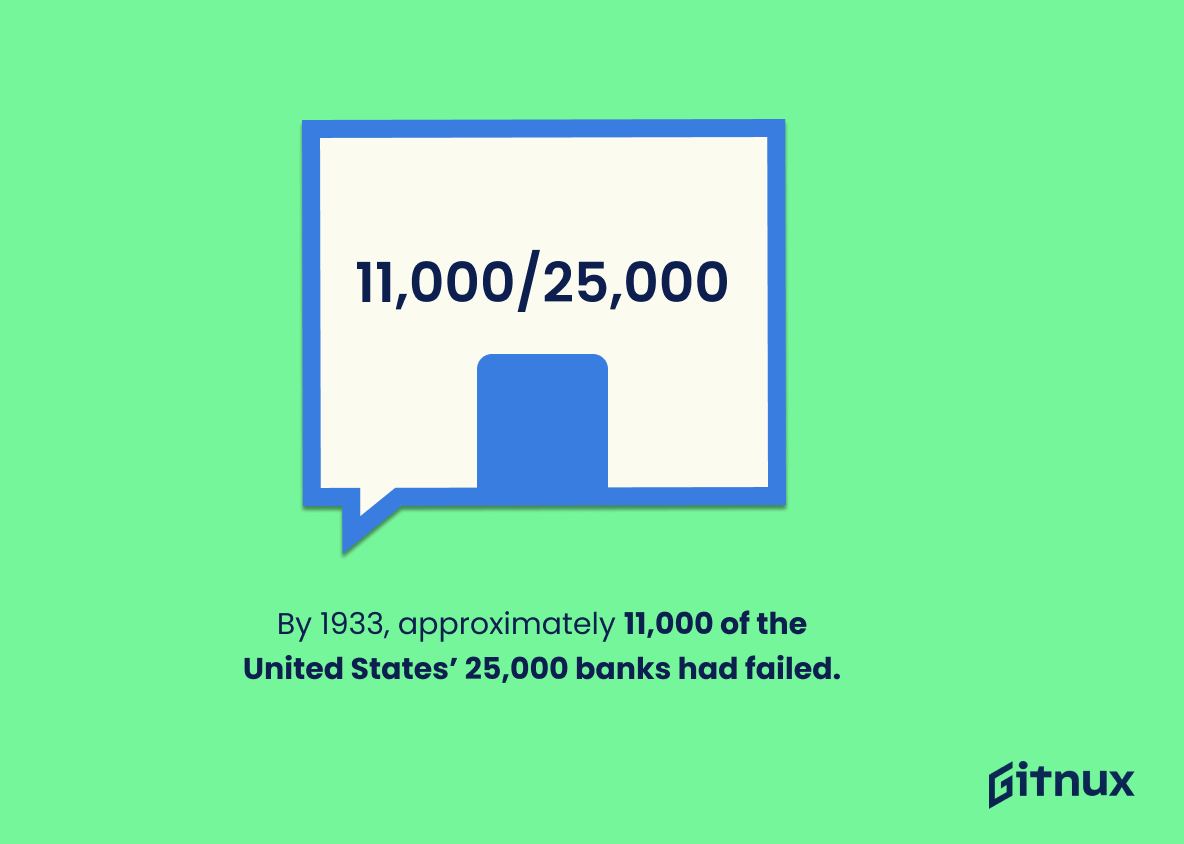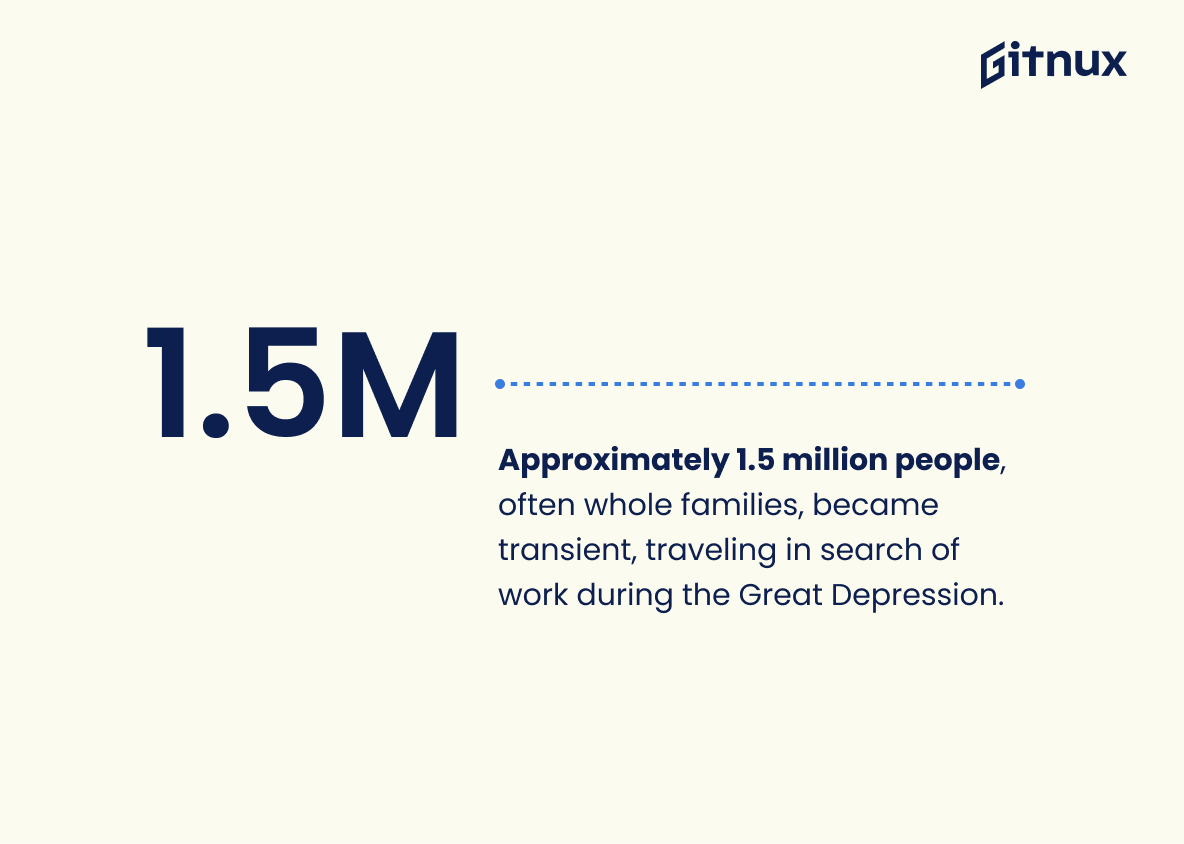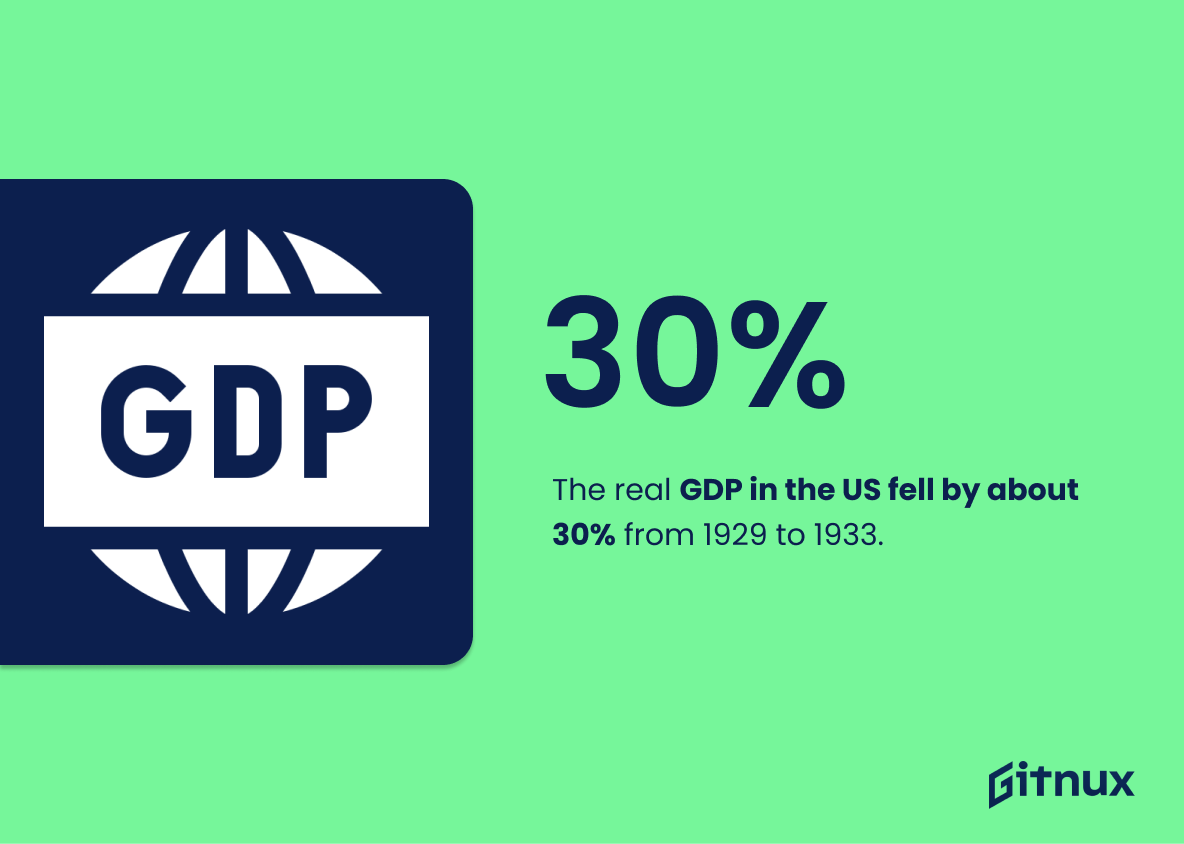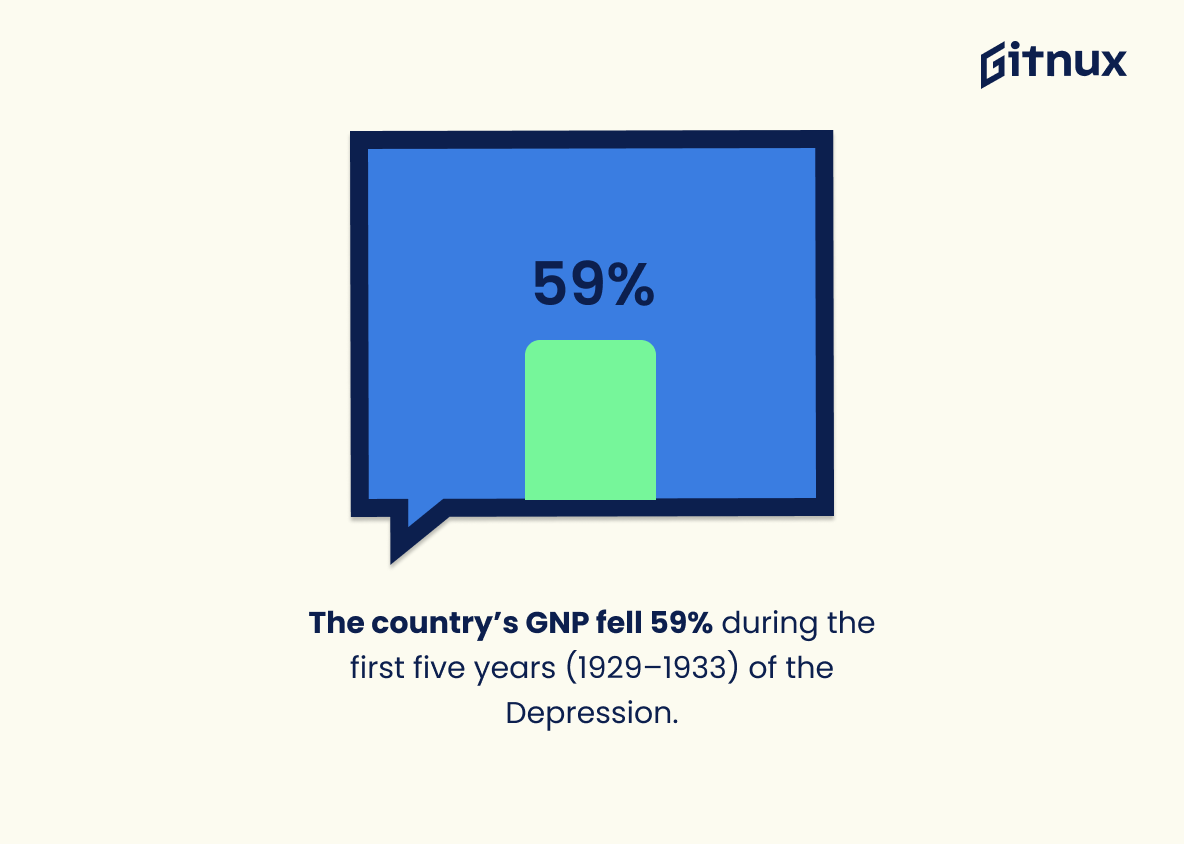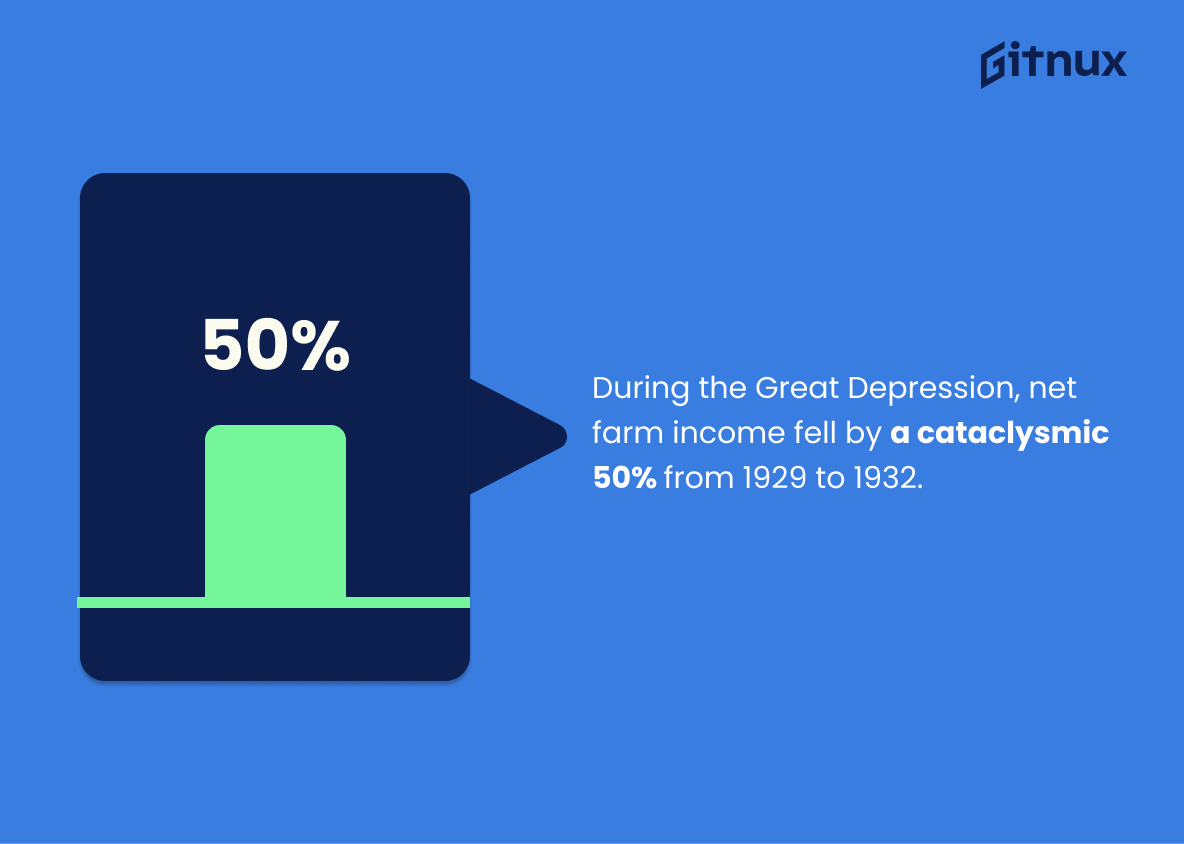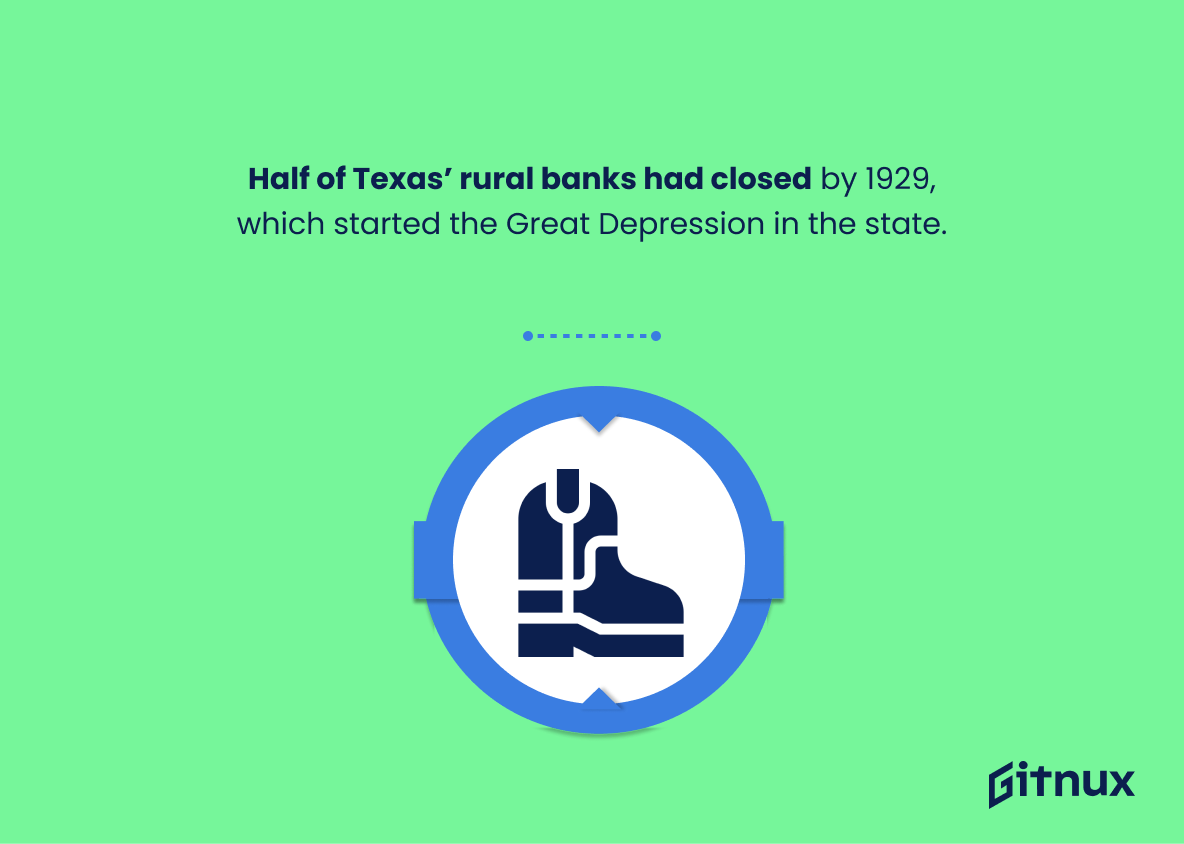Prepare to journey back in time as we delve deep into the compelling era of the Great Depression. With an economic crisis that left an indelible mark on the global canvas, this period is richly littered with significant statistics that shed light on socioeconomic conditions, human resilience, and economic recovery. This insightful blog post will draw you into the raw world of Great Depression statistics, timeless numbers that reveal insightful narratives of struggle, survival, and eventual resurgence. So, buckle up as we head into an intriguing exploration of facts and figures that define one of the most challenging periods in global economic history.
The Latest Great Depression Statistics Unveiled
Over 15 million Americans became unemployed during the Great Depression.
Highlighting the fact that over 15 million Americans found themselves unemployed during the Great Depression paints a stark picture of the magnitude of the economic abyss this period represented. It is more than just a number; it narratively encapsulates the hardship endured by a significant portion of the population, providing insight not just into the economic severity but also the widespread social impact. This striking figure punctuates the importance of understanding the Great Depression, allowing us to recognize the consequences of its devastation, and adds depth to our blog post’s exploration of the economic turmoil of that era. By including this statistic, we bring forth the human face of the Great Depression, reminding readers that these figures signify individual struggles and resilience.
During the Great Depression, the unemployment rate peaked at approximately 24.9% in 1933.
A surge upwards to an alarming 24.9% unemployment rate in 1933 paints a grim picture of the harsh reality faced during the Great Depression. Juxtaposed to the normal average, this striking figure underlines the devastating impact on the everyday lives of people in that period, thus revealing the true magnitude of the financial crisis. Hence, it is a critical anchor point in understanding the overall narrative of the Great Depression in statistical terms.
The GDP fell by -3.3% in 1930, -6.4% in 1931, -12.9% in 1932, and -1.3% in 1933 – significant declines during the Great Depression.
Deep diving into the epoch of the Great Depression, these striking figures shed light on a time of vast economic contraction, fueled by cascading falls in the GDP. These percentages unfolding the story of an unprecedented economic catastrophe, paint an exceptionally grim picture – marking 1932 as the nadir with a devastating -12.9% contraction. The years 1930, 1931, and 1933 weren’t spared either, witnessing GDP falls of -3.3%, -6.4%, and -1.3% respectively. This chronicle of plunging GDP figures punctuates just how far-reaching and severe the economic impact of the Great Depression was. Hence, it’s quintessential for a discerning reader to understand and appreciate the severity of this historical-economic cataclysm while exploring the Great Depression from a statistical viewpoint.
The stock market crash on October 29, 1929, marked the beginning of the Great Depression.
Examining the stark reality of the stock market crash on October 29, 1929, illuminates the onset of the Great Depression. It serves as a potent reminder of how quickly a thriving economy can unravel. In a blog post dedicated to Great Depression Statistics, this particular date captures the gravity of this historical event perfectly. It provides an impactful leeway into the complex web of economic downturns that marked this era. It serves as a stark milestone pinpinned at the dreadful start of a decade marked with unemployment, poverty and economic despair. Yet it also sets the stage for recognizing the resilience and recovery that followed.
On “Black Tuesday,” October 29, 1929, the market lost $14 billion, making the loss for that week an astounding $30 billion.
Delving into the dark depths of the Great Depression, one cannot overlook the catastrophic blow known as “Black Tuesday.” On this infamous day, October 29, 1929, the market depleted a heart-stopping $14 billion, driving the total loss for that week to an unparalleled $30 billion. This chilling statistic serves as a stark emblem of the economic disaster that ensued and provides a financial snapshot of the era’s turmoil. By zooming into this one reckless week, readers can shadow the precipitous downfall of the market, which became the precursor to the longest, deepest, and most widespread depression of the 20th century. Hence, this numerical nightmare isn’t merely a dull number, but a blistering reminder of the frenzied market crash and the hardship that engulfed the globe during the Great Depression.
During the Great Depression, nearly half of all banks failed in USA.
The stark reality that nearly half of all banks in the USA failed during the Great Depression spotlights the tremendous financial turmoil of that era. This statistic acts like a mirror reflecting the magnitude of economic instability, painting a vivid picture of the agitated financial landscape. It emphasizes the depth of the financial hole the country found itself in, underlining the swiftness and severity of the economic crash. This point is a sobering testament to the sheer vulnerability and volatility of financial systems during a widespread economic crisis, a fact that draws readers into the unexpected dimensions of the Great Depression’s impact.
By 1933, approximately 11,000 of the United States’ 25,000 banks had failed.
In the canvas of the Great Depression statistics, the figure ‘By 1933, approximately 11,000 of the United States’ 25,000 banks had failed’ etches a powerful stroke. Picture this – an erosion of nearly 44% of the total national banks. This rapid, far-reaching financial implosion drastically changed the landscape of the American economy. It underscores the overwhelming fragility of the economy during those challenging times, highlighting the widespread loss of confidence in financial institutions. The magnitude of this banking crisis conveys the grim reality of the epoch and serves as a stark reminder of the profound economic disruptions that unfolded during the Great Depression. The data profoundly illustrates the severity and scale of the financial turmoil faced by the nation, revealing why the Great Depression is referenced as an era of unprecedented economic hardship.
Approximately 1.5 million people, often whole families, became transient, traveling in search of work during the Great Depression.
Unraveling those gripping numbers – approximately 1.5 million individuals, with entire families frequently included – searching vagabond-like for employment during the unforgiving era of the Great Depression, paints an incredibly poignant picture of the intense hardship faced by countless souls. It serves as a somber reminder of the severe economic devastation experienced during that period, as these figures were drawn to the raw edge of desperation. The numbers are as much a testament to human resilience as they are a reflection of the economic turmoil. In an introspective post about the Great Depression, these statistics serve as a stark illumination of the grim socio-economic landscape of the time, aiding in a more comprehensive understanding of the scale and intensity of the crisis.
The Dust Bowl was caused by severe drought and poor farming practices and lasted from 1930 to 1940.
Delving into this enlightening statistic offers a deep understanding of the intertwined relationship of environmental phenomena, such as the Dust Bowl, and socio-economic happenings, such as the Great Depression. The Dust Bowl, caused by drought and farming missteps, spanning the critical era of 1930-1940, accentuates the complexity of the Great Depression, contradicting the oversimplification that it was solely a financial calamity. The persistence of this decade-long environmental catastrophe simultaneously heightened the economic hardship and contributes a distinct, and often overlooked, dimension to the overall Great Depression narrative. In this way, integrating it into a discussion regarding Great Depression statistics enriches the discourse, creating a more holistic understanding regarding the nature, causes, and effects of this significant historical debacle.
The US had about 130,000 businesses fail in 1933 during the Great Depression.
Painting a portrait of economic hardship during the Great Depression, the statistic regarding the unfortunate closure of approximately 130,000 businesses in 1933 serves as a stark reminder of the distressing financial landscape during this period. Not merely representing figures on a page, each business represents dreams dashed, livelihoods lost, and a challenging economic climate. The statistic offers a somber yardstick against which we can measure the depth of the crisis. To truly appreciate the extent of the calamity, consider this – every business shuttered signified not just an entrepreneur’s dream going awry but also job losses, dwindling consumer spending, and a ripple effect on suppliers. Hence, this grim statistic, nestled in the midst of the Great Depression era, personifies the profound economic crisis that loomed over the country, bringing the severity of the situation into sharp focus.
The real GDP in the US fell by about 30% from 1929 to 1933.
Diving deep into the era of the Great Depression, one cannot overlook the striking figure of a roughly 30% plunge in the US’ real GDP from 1929 to 1933. This dramatic economic contraction serves as a stark numerical portrait of one of the most challenging periods in American history. It magnifies the extent of the financial chaos, and the profound impact it had on the livelihood of everyday Americans, with businesses shuttering, unemployment rising, and general economic activity grinding to a halt. As a statistical milestone of the Great Depression, it speaks volumes about the severity and depth of the crisis, providing a compelling point of reference to comprehend the social-economic calamity of that period.
The country’s GNP fell 59% during the first five years (1929–1933) of the Depression.
Delving into the heart of the Great Depression, one can’t ignore the staggering plunge of the country’s GNP by 59% during the first five years (1929–1933). It’s a bleak ribbon that unspools the grim tale of this monumentally challenging epoch. This statistic is the pulse, the stark number that quantifies the crushing reality of the economic meltdown. It enlightfully distills the severity of the financial crisis into a comprehendible percentage, translating the intensity of human struggles and the enormity of the economic devastation that left profound imprints on the nation. Hence, this deeply disturbing yet important statistic is the backbone of any meaningful discourse on Great Depression Statistics.
The Dow Jones Index lost almost 90% of its value between 1929 and 1932.
Delving into the chilling depths of the Great Depression statistics, the blood-curdling drop of almost 90% in the Dow Jones Index from 1929 to 1932 serves as a haunting echo of the period’s economic terror. This staggering plunge in market value is the heartbeat of a narrative that unflinchingly portrays the financial devastation that consumed the era. It breathes life into an abstract economic calamity, translating it into concrete terms that everyday people can understand: their investments, savings, and overall financial stability eroded alongside the crumbling market.
The burning digression of the Dow underlines how no business tower was too tall to topple and reflects the economy’s descent into the abyss. It unconceals the terrifying truth about the Great Depression – that it was not merely an economic downturn, but a near-fatal blow inflicted on the global financial structure. Penetrating further than mere numerical analysis, this iconic statistic nostalgically paints a catastrophic scene of long bread lines, dust-ridden farmlands, repossessed homes, and desperate job hunts.
In essence, the Dow’s dramatic fall from grace is a brutal ghost from the past, a reminder of an epoch when every dollar counted, and every cent was a step away from destitution. It serves as a powerful illustration in a blog post that aims to envelop its readers in a solemn understanding of the paramount magnitude of the Great Depression’s economic devastation.
During the Great Depression, net farm income fell by a cataclysmic 50% from 1929 to 1932.
Delving into the nuanced narrative of the Great Depression, the stark plummet of net farm income by a staggering 50% between 1929 and 1932 provides a compelling lens through which to scrutinize the economic turmoil of that era. This dramatic statistic affirms the gravity of the crisis, as it tore not only through urban industries but also ravaged the agrarian heart of America. This figure invites readers to visualize the paralyzed economic landscape, where even the usually resilient agricultural sector buckled catastrophically. With its vast implications, this statistic captures the omnipresent reach of the collapse, illustrating how the depression did not discriminate but bruised all sectors of the economy, richly contributing to our comprehensive understanding of this historical episode.
Half of Texas’ rural banks had closed by 1929, which started the Great Depression in the state.
Examining the dramatic statistic—’Half of Texas’ rural banks had closed by 1929’—casts a significant light on the onset of the Great Depression within the Lone Star state. This figure provides a startling barometer of not just financial but also societal collapse. The bank closures not only undermined the financial stability of Texas, but also destabilized the livelihoods of individuals and businesses who relied on these banks for their economic activities. The subsequent ripple effects initiated a domino fall into the Great Depression, the fingerprints of which can be traced back to these hauntingly empty rural banks. In essence, this statistic serves as the ghostly whisper of the looming financial tempest that was the Great Depression—a tale cautioning us of the importance of resilient, robust financial institutions.
Conclusion
The Great Depression was undoubtedly one of the most significant events in American history, forever reshaping society and the economic landscape. The statistics surrounding this event reinforce its magnitude and widespread impact. From rampant unemployment rates to devastating GDP losses, these figures tell a story of hardship and resilience. But they are more than just numbers; they serve as stark reminders of a critical period in our collective history. Despite the grim reality these statistics represent, they also mark the starting point of recovery and transformation, a testament to human tenacity and an enduring spirit of survival. Keen observation and understanding of these statistics not only educate us about our past but also guide and inform efforts to strengthen current economic systems, ultimately ensuring our preparedness for future challenges.
References
0. – https://www.www.britannica.com
1. – https://www.www.history.com
2. – https://www.livinghistoryfarm.org
3. – https://www.tshaonline.org
4. – https://www.www.pbs.org
5. – https://www.www.thisismoney.co.uk
6. – https://www.www.nationalgeographic.org
7. – https://www.www.thebalance.com
8. – https://www.www.federalreservehistory.org
9. – https://www.en.wikipedia.org
